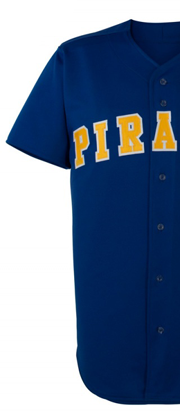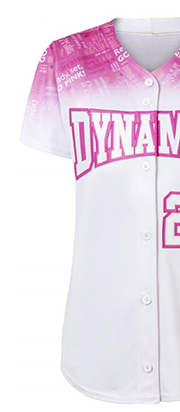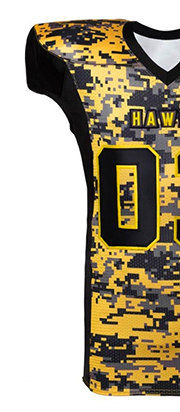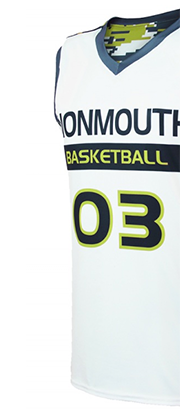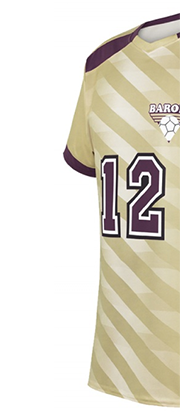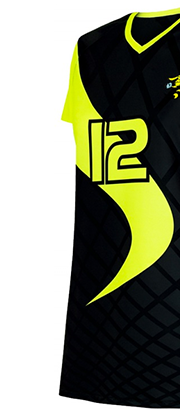First of all it’s important to make it clear that youth football is generally safe. It’s easy to be scared off by the prospect of injuries, but with the right technique, youth players can enjoy the game without having to worry unduly for their health.
There are just so many benefits that come with playing youth football. It’s great to sharpen up a young person’s teamwork and dedication. And there is an incredible amount of discipline and lateral thinking required to make it in football. You simply can’t get anywhere in the game without a large amount of study.
It’s hard to find a sport that places such an emphasis on each player having to understand their responsibilities. A lineman must make his block otherwise the play is ruined from the outset. If the center doesn’t snap the ball properly, you lose a down.
One of the best things about football is that irrespective of the result, the pulling together required to execute all of the plays and the overall team philosophy can be very rewarding indeed. It’s great for confidence too. The first time a kid pulls on his junior football uniform, he’ll feel on top of the world.

It’s important for parents and coaches to remember that football is quite a full-on and tough game that might take a bit of getting used to. It’s entirely possible that a youth player may find it hard in the beginning, but perseverance is key. Once a young player learns the basics and gets over the fear of the physical contact, that’s when they can really appreciate the beautiful intricacies of the game.
The role of a parent is key in the process of a youth footballers’ development. If you are a parent of a youth footballer it’s vital that you are always encouraging, and that during the bad times you understand that it’s an achievement in itself for a child to be charging around a football field with 10lb of gear on their back, taking hits left, right and center.
Do what you can to help their practice too. Just throwing a ball around in the back garden will help, and how about asking your son to demonstrate what they’ve learned after each session?

But there is a fine line between being an encouraging parent and an interfering one. Respect the boundaries between the coach and the team. It’s an age-old problem that a child feels he’s in the wrong position or at least that he’d like to try another one, but in this instance it’s always best that your child asks the question, not you.
All coaches ought to know that it is good for the development of any player to try out a variety of positions. It’s important to keep an open mind about this. An offensive lineman at 11 years old could still easily become a quarterback as an adult.
Keep reading for an outline of the main requirements for each youth football position…
Offense:

Quarterback – The absolute leader of the team, any quarterback needs to have a great understanding of the nuances of the game, as well as be quick on their feet, have a strong arm and be prepared to take a hit. Read more here.
Running Backs – Running backs have to be fast, but they also have to be tough, especially in youth football. Because linemen may not have learnt how to block, the running backs tend to be exposed. Read more here.
Receivers – Receivers need a good all-round game. They need pace, they need to be good catchers, and they need to be comfortable with blocking in the open field. Read more here.
Linemen – Linemen are never the superstars, but they are vital to the game. This is normally the domain of the bigger kids – it’s a game of strength and attrition.
Tight Ends – Athleticism and blocking is the name of the game here, and you’ve gotta be ready to catch too. Although most of the time a tight end will be blocking, they can prove a useful alternative for a quarter back on certain plays. Read more here.
Defense:

Linebacker – Linebackers are the kids who like getting down and dirty and tackling. They need to read the game too, i.e. is the opposing offense going to run it or pass it? They tend to be the leaders of the defense. Read more here.
Defensive Line – This is another fundamental part of the game that doesn’t always get the credit. They’re basically responsible for stopping the opposition’s plays. The positions of defensive ends, defensive tackles and nose guards make up the defensive line. Read more here.
Defensive Backs:
Cornerback – Cornerbacks run the sides of the defensive backfield. They need to be quick in order to cover the opposition receivers and to participate in the offensive plays that are run down the sidelines. Read more here.
Safety – There are two safeties, “strong” and “free”. The strong safety tends to play close to the line of scrimmage. They need to be quick, and good tacklers, as well as being able to read and defend a pass. Read more here.
The free safety is normally the last line of defense if the opposition’s offense breaks free from the other defenders. This is more about speed and reading the game than it is about pure hitting.
Special Teams:

Special teams are not involved in the majority of the plays in any game, but they are often the difference between winning and losing. Although in junior football special teams is often the place for the kids who don’t get much playing time in the offense and defense, it also provides a great opportunity to shine. A good play in special teams could help get more game time elsewhere, and as mentioned, there are some positions in special teams that can win or lose a game on their own.
Kickoff – This is made up of the kicker and the line of coverage trying to stop the opposition’s kickoff returner. Each player is responsible for their own ‘lane’ of coverage, so they need to be quick and good at tackling to react to the kickoff returner when they come towards their lane.
Kickoff Return – The kickoff return team needs to be a combination of raw pace and catching (in case they catch the ball from kickoff) and great blocking in order to clear a path for the returner.
Punt – Punting is a bit more of a variable in youth football than the adult game because there is less consistency in the kicking of the ball. Never the less, the punt squad can still change a game. They’ll need to block and tackle all they can to prevent the opposition’s returner making too much progress.
Punt return – Normally the returner will be a receiver or running back from the offense who has the speed and catching ability to make a big play. The accompanying team will need to be good blockers.
It’s vital that a coach understands the three key areas of the game, and that when the kids pull on their football uniforms, they understand them too!
Check out this link for more coaching tips: http://football.about.com/od/howtoplaycoach/tp/Tips_for_Football_Coaches.htm

